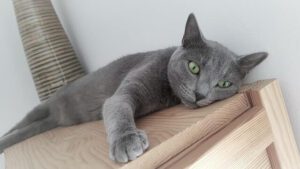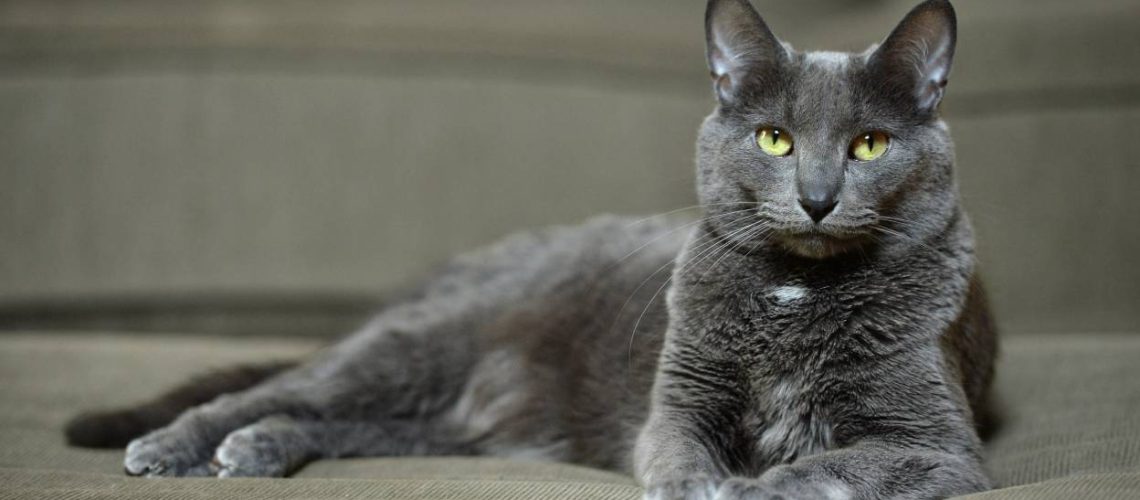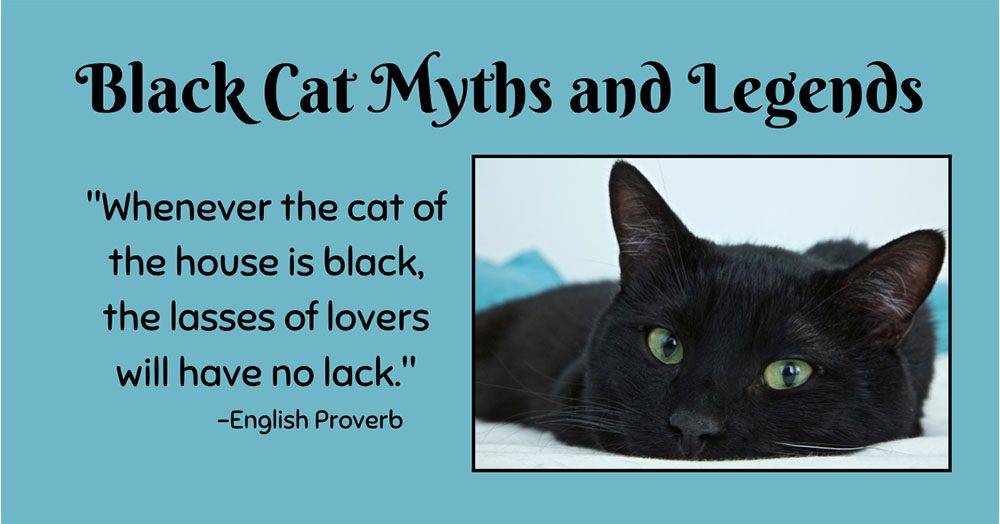Embark on a journey of luck and charm with Korat Cats, Thailand's feline treasures. Explore their fascinating history and cultural significance, discovering the joy they bring. Understanding the allure of Korat Cats connects you with Thailand's rich heritage. Dive into unraveling the mysteries behind these adorable feline companions. Be captivated by their beauty, intrigued by their legends, and enchanted by their presence. Join us as we explore the magical realm of Korat Cats, where luck and charm intertwine seamlessly.
Key Takeaways:
- Korat cats are a unique breed native to Thailand, known for their stunning silver-blue coat.
- These feline charms are considered symbols of good luck and prosperity in Thai culture.
- Korat cats are highly intelligent and affectionate companions, forming strong bonds with their owners.
- They have a natural curiosity and playful nature, making them great entertainment for households.
- Korats require minimal grooming due to their short coat, but regular playtime and mental stimulation is essential for their well-being.
What is a Korat cat and where does it come from?
A Korat cat is a unique breed of domestic feline that originated in Thailand, formerly known as Siam. These cats are known for their striking silver-blue coat, brilliant green eyes, and muscular build. They have been cherished by the Thai people for centuries and are considered a symbol of good luck and prosperity.
The origins of the Korat cat can be traced back to ancient times, where they were highly valued and revered by Thai royalty. Legend has it that these cats were believed to bring good fortune to their owners. They were often given as gifts to dignitaries and were kept in temples as sacred animals.
The Lucky Feline Charms: How Korat cats got their reputation in Thailand
In Thailand, Korat cats are regarded as lucky charms due to their association with prosperity and good fortune. According to Thai folklore, these cats were believed to bring wealth and happiness to their owners. It was thought that having a Korat cat in the house would ensure financial success and protect against evil spirits.
Thai people also believe that the color of a Korat cat's eyes changes according to its owner's mood. If the owner is happy or content, the eyes appear bright green; if sad or upset, the eyes turn a darker shade of green. This belief further adds to the mystical allure surrounding these enchanting felines.
The Unique Look of Korat Cats: What makes them easily recognizable?
Korat cats have several distinctive features that make them easily recognizable. Their most prominent characteristic is their short, sleek coat which is predominantly silver-blue in color. This unique hue sets them apart from other cat breeds.
Another striking feature of Korat cats is their large, round, and expressive green eyes. Their eyes are often described as "emerald orbs" that captivate anyone who gazes into them. This captivating gaze adds to the overall charm and allure of these beautiful felines.
Korat Cats in Thai Culture: Their significance and beliefs
In Thai culture, Korat cats hold a special place and are considered a symbol of good luck and prosperity. They are believed to bring positive energy and protection to their owners' homes. As a result, these cats are highly sought after as pets in Thailand.
Thai people also believe that the presence of a Korat cat in the house brings harmony and serenity to the family. It is said that these cats have a calming effect on their surroundings, helping to relieve stress and promote relaxation.
Korat Cats as Companions: How they behave and why they make good companions
Korat cats are known for their gentle and affectionate nature, making them excellent companions for individuals or families. They form strong bonds with their owners and enjoy being part of the household activities. These cats thrive on human interaction and love receiving attention.
Despite their playful nature, Korat cats are generally quiet and well-behaved. They are not overly demanding or vocal but will express themselves through soft purring or gentle head nudges. Their calm demeanor makes them ideal pets for those seeking a peaceful companion.

Caring for a Korat Cat: Health concerns and special care requirements
To ensure the well-being of a Korat cat, proper care should be taken regarding their health needs. Regular veterinary check-ups are essential to monitor any potential health issues that may arise. It is also important to provide them with a balanced diet and ensure they have access to fresh water at all times.
Korat cats have a short coat that requires minimal grooming. Regular brushing helps remove loose hair and keeps their coat healthy and shiny. Additionally, providing them with appropriate toys and scratching posts will help keep them mentally stimulated and prevent any destructive behavior.
Legends and Stories: Interesting tales associated with Korat cats in Thailand
Throughout Thai history, several legends and stories have been associated with Korat cats. One popular legend tells the story of a Korat cat named Nara, who was believed to have brought great fortune to its owner. The tale goes that anyone who possessed a Korat cat would be blessed with prosperity and happiness.
Another story revolves around a Korat cat named Thongdaeng, which means "golden light." This cat became famous in Thailand when it was adopted by the late King Bhumibol Adulyadej. Thongdaeng's loyalty and companionship captured the hearts of the Thai people, solidifying the Korat cat's status as a beloved national treasure.
Preserving the Breed: Efforts to protect and maintain the Korat cat breed over time
The Korat cat breed has faced challenges in maintaining its pure lineage over time due to crossbreeding with other domestic cats. However, efforts have been made by dedicated breeders to preserve this unique breed's characteristics and lineage.
Breeders follow strict guidelines established by international cat associations to ensure that breeding pairs are genetically diverse yet maintain the distinct features of the Korat cat. These efforts aim to safeguard the future of this cherished breed for generations to come.
In conclusion, Korat cats are special and unique feline charms from Thailand. They are considered lucky and bring good fortune to their owners, making them a beloved pet choice worldwide.
Are Korat cats good luck?
The Korat, also known as the Si-Sawat in Thailand, is commonly called the "Good Luck Cat." According to Thai folklore, the Korat brings even more good fortune if it has a kink in its tail. Thai tradition says that gifting a bride with a pair of Korats on her wedding day ensures a joyful marriage.
How rare is a Korat cat?
As an example, it was common for brides to receive two Korat cats as a symbol of good luck and prosperity in their marriage. Although this cat breed has existed for almost a thousand years, it was not introduced to America until 1959. Even today, these cats are still not widely seen in most parts of the world outside of Thailand.
What is the lucky cat breed in Thailand?
Korats are a breed of cat that is considered one of the oldest and most reliable in the world. They are highly regarded in their home country of Thailand as a symbol of good luck and are often given in pairs, particularly as wedding gifts to brides, according to the Korat and Thai Cat Association (KTCA).
How can I tell if my cat is a Korat?
The Korat cat is known for its unique features, including a heart-shaped head, large green eyes, and shorter front paws compared to its back paws. This natural breed is one of the oldest and most stable cat breeds, and its appearance has remained unchanged for centuries.
What does the Korat cat symbolize?
The Korat cat is believed to bring good luck and has been highly valued by the Thai people. Traditionally, it could only be given as a gift to someone deserving. On the wedding day, it was common for a bride to receive a pair of Korats.
What are Korat cats known for?
Korats are known for their calm and gentle demeanor. They are highly loyal and intelligent, and their curiosity drives them to explore their environment and interact with those around them. They have an affectionate nature and enjoy being close to their owners, as well as playing with other cats or children.

















